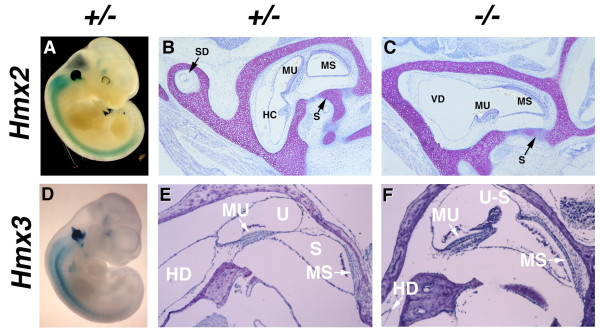Figure 3.
Abnormal vestibular structure and morphogenesis in whole-mount β-galactosidase stained mid-gestation embryos lacking either Hmx2 or Hmx3. Early in development Hmx2 (A) is expressed throughout both the vestibular portions of the inner ear of heterozygous (A) embryos. Embryos that are homozygous for the absence of Hmx2 (C) have relatively normal cochlear development in the presence of severely dysmorphic vestibular development. The endolymphatic duct morphogenesis is retarded and the superior (SD), posterior (PD), and lateral or horizontal (HD) semicircular ducts appear to form a fused and primitive vestibular diverticulum (VD) and is associated with decreased maculae of the utricle (MU) and saccule (MS). In contrast, Hmx3 expression in the inner ear of heterozygous (D) and homozygous (F) embryos demonstrates expression throughout only the vestibular apparatus, including the ED and all three semicircular ducts. Embryos that are homozygous for the absence of Hmx3 (F) have mild faulty development of vestibular structures including a fusion of the utricular and saccular chambers (U-S) and a dysmorphic utricular maccula (MU) in the presence of circling behavior.

